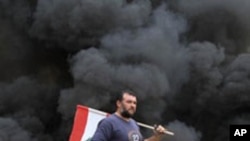Since independence from France, Lebanon’s government has been shared by Christian, Shi’ite and Sunni Muslims according to a 1943 formula that accorded majority power to Christians. This formula has remained in place, failing to reflect changing demographics: the president would be Christian; the prime minister, Sunni Muslim; and head of parliament, Shi’ite. All religions would have positions in parliament, ranked by the size of religious communities.
- Since independence from France, Lebanon’s government has been shared by Christian, Shi’ite and Sunni Muslims according to a 1943 formula that accorded majority power to Christians. This formula has remained in place, failing to reflect changing demographics: the president would be Christian; the prime minister, Sunni Muslim; and the head of parliament, Shi’ite. All religions would have positions in parliament, ranked by the size of religious communities.
- Struggles for power within Lebanon also reflect wider struggles between Lebanon and Israel, Syria, and Iran.
- Syria has vacillated vis-à-vis Lebanon, reflecting its dual fears that Lebanon could emerge either as a Christian state that would side with Israel, or a radical Islamic state.
- In 2005, former Prime Minister Rafiq Al-Hariri was assassinated. A U.N. Tribunal, as of early 2011, looked ready to accuse the Syrian-backed Hezbollah group. Hezbollah-backed parties resigned from government, forcing its collapse.
- President Michel Slieman has named Syrian/Iranian favorite, Najib Mikati, as prime minister.
|



































